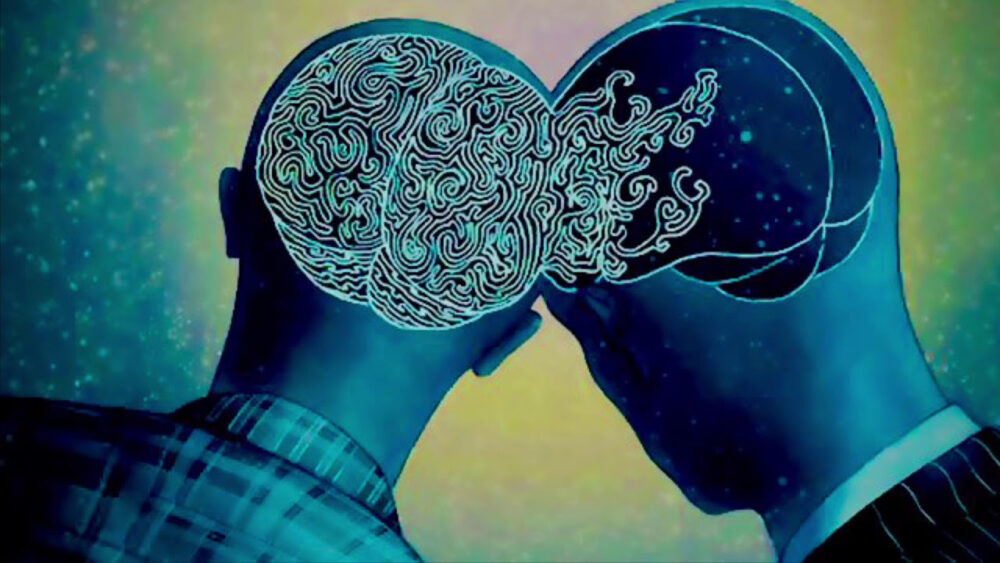How We Respond to Others
Humans have a strong sense of individuality, and the stronger our ego, the harder it can be to form connections with others. Yet, it is precisely these social and interpersonal connections that make us stronger: when we start to see the world from another person’s perspective, we can discover many new and interesting things.
Empathy, as a field of scientific interest, is studied by several disciplines, from psychology and sociology to neurobiology. This is because, when we respond to the feelings and experiences of others, we engage different types of reactions—not only emotional, but also cognitive.
Empathy is the ability to feel another person’s emotions, to relate to them, and sometimes even to read their emotions. In fact, by showing empathy, we establish a psychological and emotional connection with another person, blurring the boundaries between “I” and “they.” Empathy is considered a cognitive ability, just like the ability to imagine future scenarios or solve problems based on past experience.
Empathy vs. Sympathy
However, empathy is not our only tool for responding to the troubles of others: people are also capable of feeling sympathy. While these two abilities may seem very similar, there is a clear distinction between them.
When we feel empathy, we imagine ourselves in a situation similar to the one another person is experiencing, and we accept their experience as if we are living it ourselves. The key point, however, is that we do not actually feel the real emotions—we simulate them.
When we feel sympathy, we also take on another person’s experience, but this time it affects us—we are so moved by their experience that we have our own emotional reaction: we feel bad, we worry, or, on the contrary, we are happy for someone else’s success.
Empathy itself is also divided into two categories—emotional empathy and cognitive empathy—depending on the type of reaction we show:
- Emotional empathy is triggered by the feeling that another person is experiencing. We respond to it almost automatically and begin to feel emotional empathy. However, our sensations are not identical: if someone falls and, for example, breaks a leg, we simulate and take on a certain share of their suffering, but not the physical pain itself.
- Cognitive empathy is usually triggered by conscious attention to another person’s feelings. This is the type of empathy referred to in the development of emotional intelligence: a person is encouraged not just to react to someone’s pain, but to make an effort to understand it. Cognitive empathy is an attempt to look into another person’s mind, to recognize what they are feeling, and, let’s be honest, to use this knowledge to our advantage when possible. For example, we might predict someone’s reaction to our proposal and adjust our negotiation strategy accordingly.
How Do We Empathize?
In an effort to better understand how empathy forms and to answer the question “How does this even work?”, neurobiologists and sociologists have developed two main theories. Interestingly, these approaches to the nature of empathy are opposite to each other, and science has yet to provide a definitive answer as to how empathy works. So, both theories are just hypotheses, but they are worth considering.
- The Simulation Theory: Supporters of this theory believe that, in moments of empathy, we imitate another person’s emotion, essentially imagining what we would feel in their place, relying largely on our own emotions—and, some would say, our imagination.
- The Theory of Mind: According to this theory, we do not live in a world of our own fantasies about others’ feelings, but rely on concrete facts. When we show empathy, we base it on our understanding and past experience of what a person should feel in similar situations. In other words, we use thought processes to explain feelings and actions.
Why Is This Important?
Understanding how empathy forms is important, if only for the noble goal of enlightenment. But empathy itself is essential for being human. It’s safe to say that empathy is the building block of human morality. Thanks to empathy, we live and exist in society—without which, as we know, we would not have survived as a species (even animals tend to form groups!).
A person who does not have psychopathic disorders begins to show the first signs of empathy at the age of two or three. However, despite our natural predisposition to develop empathy, how it is expressed (whether we hug someone or just nod sympathetically from the sidelines) and how often we openly allow ourselves to show it depends on upbringing, culture, environment, and even genetics. While certain “norms” may limit our reactions, research shows that throughout life, people tend to display the same level of empathy they developed by the end of adolescence. From this perspective, it is very important to encourage children’s ability to empathize and help others during their upbringing.
Well-developed empathy makes us successful members of society; it is a key component in human, social, and psychological interaction at all stages of life because it helps us understand the needs and intentions of others. Of course, not everyone needs an active social life, but having a close circle of people plays a critical role in developing a healthy and happy personality.
We build our relationships in the family, at work, and beyond our personal and professional lives based on empathy, and all of this ultimately affects how happy and satisfied we are with our own lives. In short, the more empathy and compassion we have, the less we need therapy and mental health recovery. Now is a great time to stop and think about the feelings of those around you.



